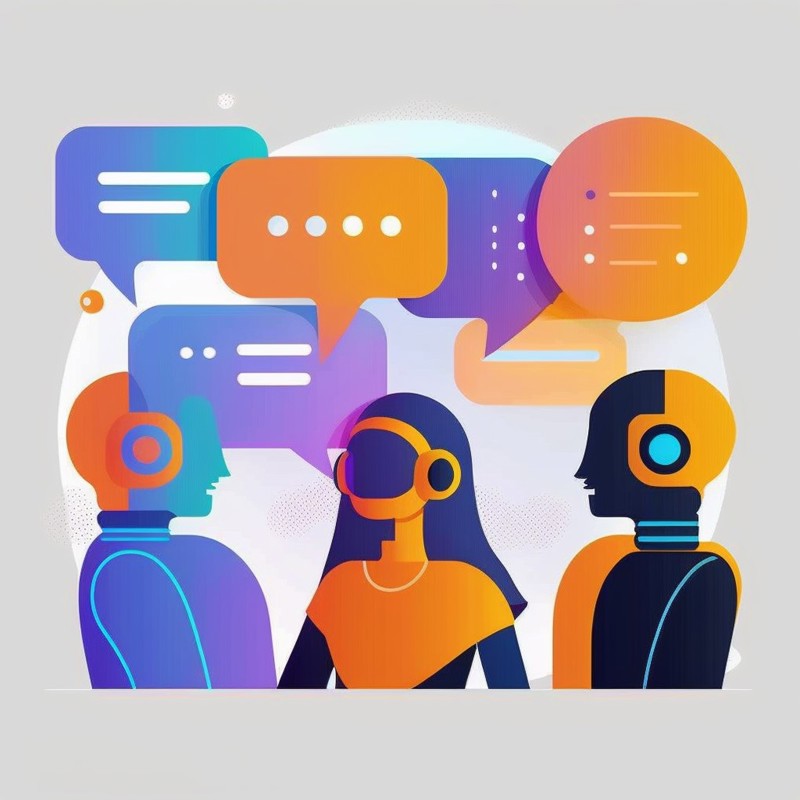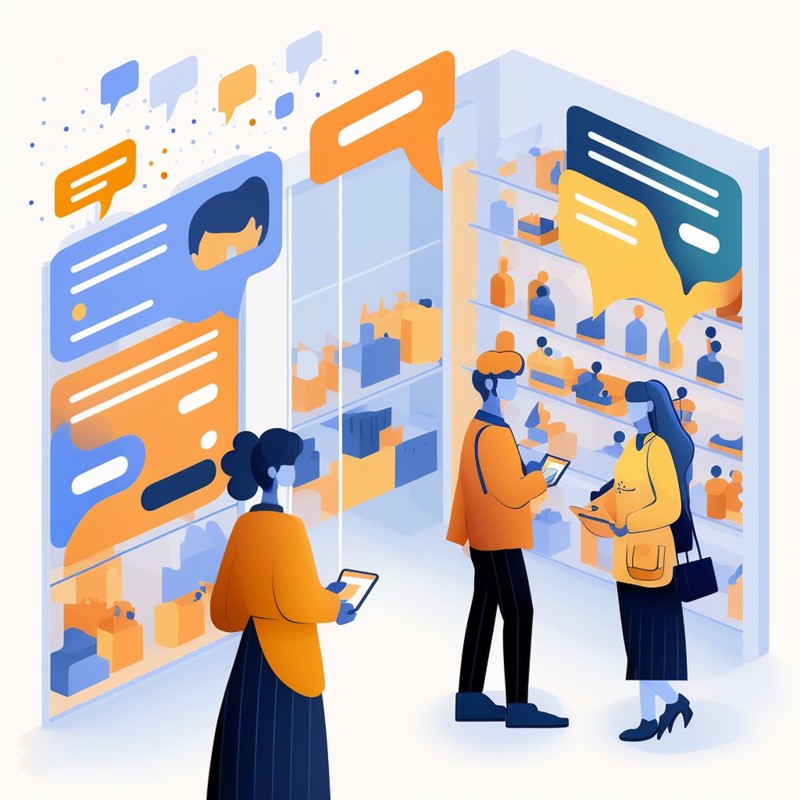Conversational AI for Business
Conversational AI is any machine that a person can talk to, such as a chatbot, a voice assistant, a service or a computer-guided avatar in the metaverse. It uses natural language processing, machine learning and large volumes of data to understand and respond to human inputs across various languages. This is not a new concept, but it has become more advanced and widespread recently, thanks to the improvements in technology. More and more businesses are adopting conversational AI solutions to enhance their employee experience, productivity, customer service, marketing, sales and operations.
One of the most advanced examples of conversational AI is OpenAI ChatGPT, a neural network that can generate coherent and fluent text responses based on human input. ChatGPT uses a deep learning model called GPT-3.5 Turbo, which can produce coherent and engaging text on almost any topic and can also learn from its own conversations and adapt to different contexts and domains.
However, ChatGPT is not the only service out there. Microsoft Azure OpenAI includes GPT-3 and GPT-3.5 Turbo models for enterprise and business use, while on the consumer side Bing Chat is a feature of Microsoft's Bing search engine that allows users to interact with an AI-powered chatbot that can answer questions, provide information, and generate drafts. Bing Chat is powered by GPT 3.5+. At the time of writing, GPT-4 has not been released yet, but it will be a multimodal language model, meaning that it can also understand and generate images, audio and video. In sum, GPT-4 is going to be much more versatile and powerful compared to GPT-3.

Businesses Can Get Ahead with Conversational AI
Conversational AI has been hailed as a game-changer in the world of business, and it offers many advantages, uses and benefits for businesses of all sizes and industries. This is because it understands the user’s intent and provides relevant information based on the context, history, location and other relevant factors. Here are some of those advantages.
Cost efficiency. Reduce operational costs by automating repetitive tasks such as answering FAQs, booking appointments, taking orders or providing product information for multiple customers at the same time. This can free up human agents to focus on more complex or high-value interactions. With ChatGPT demonstrating how powerful natural language understanding can be, it is becoming apparent how limited our interaction options have been with bots. Today, there are big cost and resource savings possible with this new technology.
Customer satisfaction. Provide faster, more convenient, more accurate and more personalized service that is available 24/7. Customers can choose their preferred channel (text or audio) and device (website, app, social media) to interact with businesses.
For example, a chatbot can use natural language generation to create personalized and tailored responses that match the tone and style of the customer, who interacts with it using their natural language. This can be enhanced by providing services that have speech-to-text and text-to-speech included, using speech synthesis to produce natural-sounding vocals that convey emotion and personality. Combined with translations, this can happen in the customer’s own language.

Employee engagement and efficiency. Enhance employee engagement by augmenting their skills and capabilities with data-driven insights. Employees can use conversational AI tools to access information, generate text content or receive feedback. Conversational AI can also help employees learn new skills or improve their performance through coaching or training – all using natural language.
Microsoft has introduced Copilot for Dynamics 365, to bring in AI to help with customer relationship management (CRM) and enterprise resource planning tasks. One example of such tasks is Microsoft Viva Sales, which now has AI included to help salespeople communicate more efficiently with customers by using AI-generated email replies that take note of account and opportunity information in the CRM system. Microsoft Teams Premium is also helping employee engagement with the intelligent meeting recap feature. This AI-based capability highlights meeting notes, tasks and mentions, and creates chapters for recording automatically.
HR is another business area conversational AI can drive greater efficiency. Think of the job descriptions and other content HR generates daily. They can get a good head-start with draft texts generated by AI. Perhaps they need ideas about how to format a message that is sent to everyone in the company; “brainstorming” ideas with AI can help to create a better result. This technology can also help write summary text and translations more quickly. These examples don’t mean you don’t need human employees – you do. AI just helps them to be better and faster at what they do.
Employees can also use AI to speed up learning simply by having a conversation with it; AI can bring in insights about a certain topic and also provide relevant links about where to find more information. You can even ask AI to help you write code (GitHub Copilot brings in AI as a pair programmer) or generate code documentation.
Business intelligence. It is possible to collect and analyze large amounts of data from customer interactions thanks to the computing power behind conversational AI. Businesses can use this data to understand customer behavior patterns, preferences and feedback, as well as measure key performance indicators such as conversion rates, retention rates and satisfaction scores. Conversational AI can also help businesses identify new opportunities for growth, innovation and improvement.
Content discovery. Conversational AI simply transforms how we search for information. Users can find answers more intuitively than traditional search engines. Understanding complex queries expressed in natural language, instead of using traditional keyword-based search, and providing users relevant answers in natural language from multiple sources is the future of content discovery.
Technically, there may be various services (such as Azure Cognitive Search and OpenAI Services) “under the hood” to discover relevant documents and information, create summaries, collect information and provide translations, but for users, it is the ease of use with natural language that matters. Natural language understanding and generation also opens real possibilities to use speech-to-text and text-to-speech to meet various work and accessibility needs.
Bing Chat is an example of conversational AI that leverages the power of web search and natural language generation to provide users with a new experience of accessing information and discovering content. It aims to improve the user experience by making search more interactive and contextualized. I wrote about Bing Chat in a blog post to MyMetaverseDay, where I concluded that the use of natural language profoundly changes the way we look for information and get answers. I also noted its usefulness in generating draft text.

Conclusion
You can expect AI to land at enterprises quickly. It is already clear that these capabilities will be embedded in various Microsoft products to help boost productivity.
However, the technology is not without its challenges. Businesses need to ensure that their AI services are well-designed and properly trained to provide accurate and helpful responses. Employee efficiency and productivity boosts do not come without training and adoption. Companies also need to be transparent about the use of AI and data privacy. Provided these challenges can be met, conversational AI has the potential to transform how businesses operate and how we interact with information. Business decision makers should consider how they can leverage this technology to drive productivity, efficiency and innovation in their organizations.


